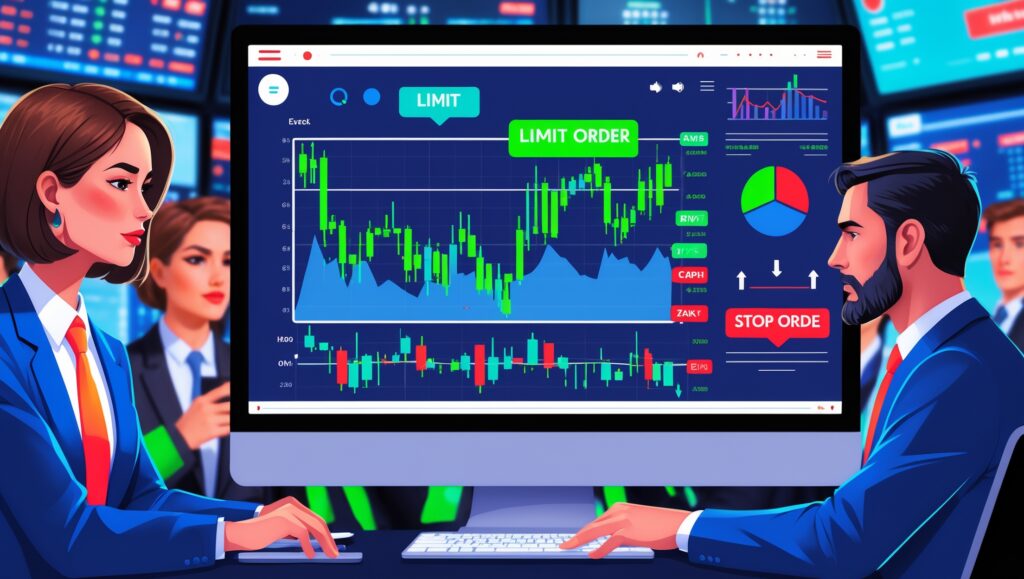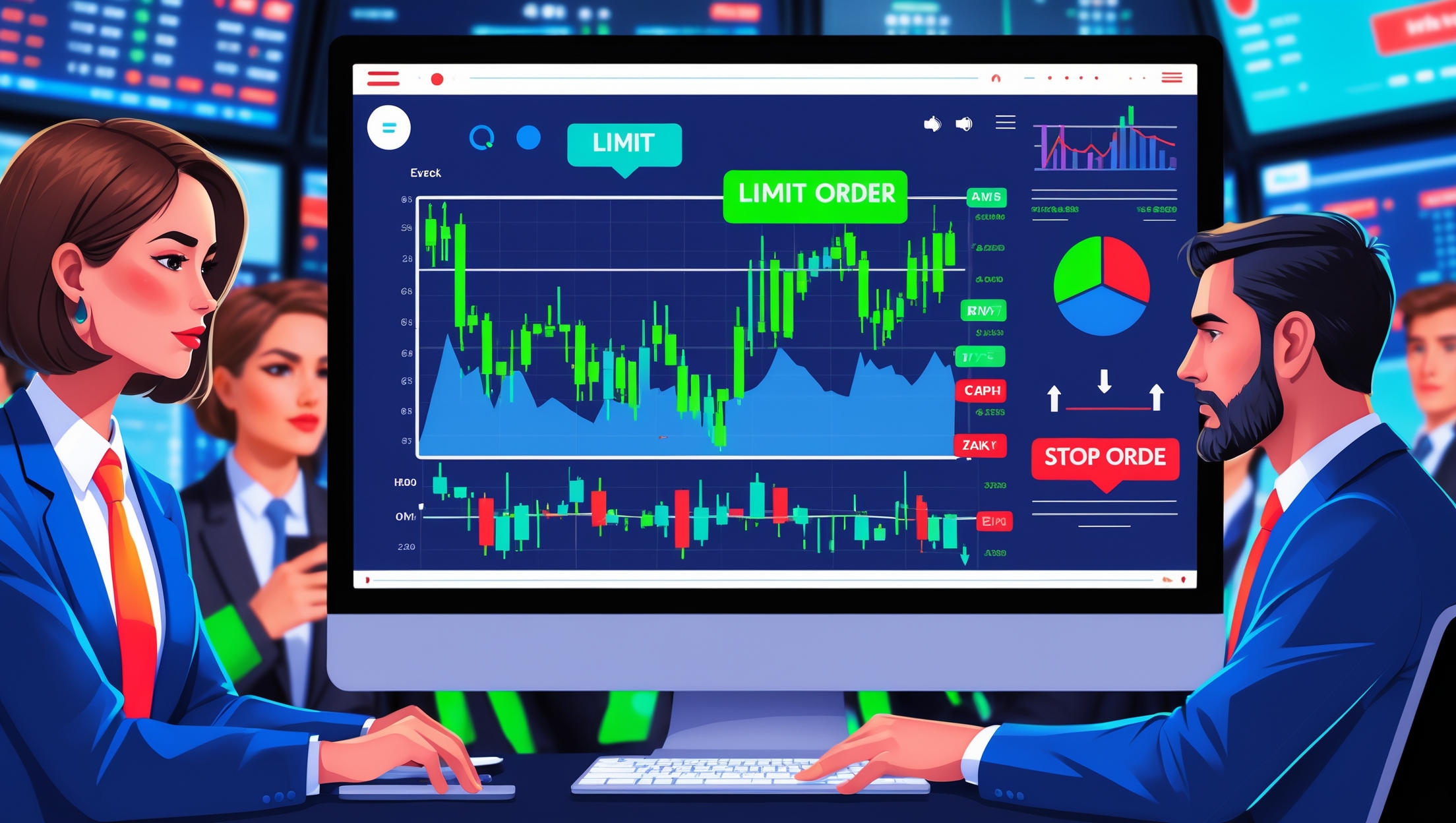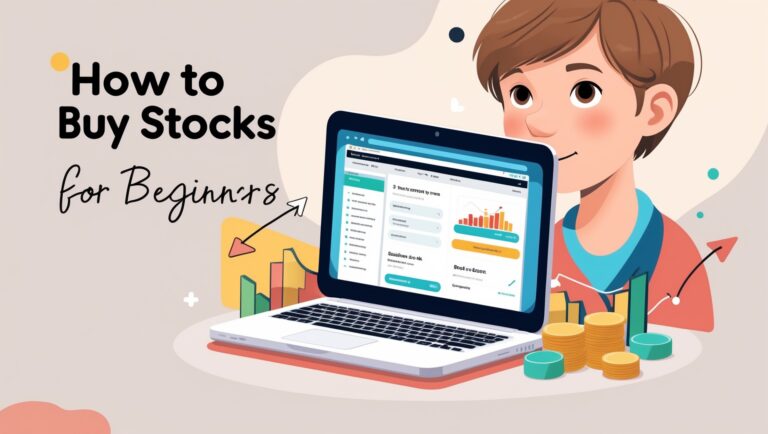How to Use Limit and Stop Orders Effectively
How to Use Limit and Stop Orders Effectively
Learn how to use limit and stop orders effectively to manage risk, execute trades precisely, and protect your investments. I share my personal strategies, tips, and best practices for smarter trading.

Table of Contents
What Are Limit and Stop Orders?
Limit orders and stop orders are tools that allow me to control how and when I buy or sell assets.
A limit order sets the maximum price I’m willing to pay when buying, or the minimum price I’ll accept when selling. This ensures I don’t overpay or undersell my investments.
A stop order triggers a trade when a stock reaches a specific price. I use this to protect profits or limit losses, which is particularly useful in volatile markets.
Why I Use Limit and Stop Orders
I learned early on that emotional trading often leads to mistakes. Using limit and stop orders helps me stick to a disciplined strategy and avoid impulsive decisions.
These orders give me control over trade execution, allowing me to plan entry and exit points instead of reacting to market noise.
I also use them to manage risk. Stop orders act as a safety net, helping me exit losing trades before losses grow too large.
How Limit Orders Work
When I place a limit order, I specify the price at which I’m comfortable buying or selling. For example, if I want to buy a stock at $50 but it’s currently $52, I set a buy limit order at $50.
Limit orders are especially useful in volatile or fast-moving markets because they ensure I only buy or sell at prices I find acceptable.
I also use limit orders for profit-taking. If a stock I own reaches a target price, I set a sell limit order to lock in gains automatically.
How Stop Orders Work
Stop orders become active when a stock hits a predetermined price. For instance, if I want to limit losses, I might set a stop-loss order at 10% below my purchase price.
Once the stop price is triggered, a market order is executed, allowing me to exit quickly and avoid larger losses.
I also use stop orders to protect profits, called a stop-limit or trailing stop. This helps me capture upside while managing downside risk.
Combining Limit and Stop Orders
I often combine limit and stop orders for more precise trade management. For example, I can use a limit order to buy at a low price and a stop order to sell if the stock drops unexpectedly.
This strategy helps me control risk while maximizing potential gains. I no longer rely solely on watching the market continuously, which saves time and reduces stress.
Benefits I’ve Experienced
Using limit and stop orders has several advantages:
- Reduces emotional decision-making
- Provides precise entry and exit points
- Manages risk and protects profits
- Saves time by automating trade execution
These tools allow me to trade more confidently and strategically, even in volatile markets.
Common Mistakes to Avoid
I’ve made mistakes early on, such as:
- Setting stop orders too tight, causing premature exits.
- Forgetting to adjust stop orders as positions move in my favor.
- Not considering market liquidity, which can affect order execution.
Learning from these mistakes improved my trading discipline and results.
Using These Orders With ETFs and Stocks
I use limit and stop orders not only for individual stocks but also for ETFs and other tradable securities. These orders help maintain my portfolio strategy without constantly monitoring prices.
This approach allows me to balance active management with long-term investing goals, keeping my risk in check.
Automation and Alerts
Many brokers provide alerts and conditional orders, which I use in combination with limit and stop orders. This helps me respond quickly to market movements and reduces the need for constant monitoring.
Automation complements my strategy by ensuring trades execute according to plan, even when I’m not actively watching the market.
Integrating With a Full Investment Strategy
I don’t rely solely on orders; I integrate them with diversification, portfolio allocation, and long-term planning. Limit and stop orders are tools to execute my strategy effectively, not substitutes for it.
They allow me to maintain discipline, manage risk, and protect gains while keeping my long-term goals in focus.
Want My Full Trading System?
If you want to see exactly how I use limit and stop orders to manage risk, execute trades, and grow wealth systematically, I share my full system in my ebook: Pay Bills with Stocks.
I walk step by step through my portfolio strategies, order execution tactics, and risk management techniques, so you can trade with confidence and discipline.
Final Thoughts
Limit and stop orders are essential tools for disciplined investing. By using them effectively, I control my trades, reduce emotional mistakes, and maintain a consistent investment strategy.
For a detailed guide on using these orders and managing your portfolio like I do, check out my ebook: Pay Bills with Stocks.
One of the first lessons I learned is that discipline is more important than speed. Limit and stop orders help me follow a structured approach instead of chasing prices impulsively.
I also use limit orders to control purchase prices. By setting a maximum buy price, I avoid overpaying during short-term spikes, which has helped me maintain better average costs in my portfolio.
Stop orders are my safety net against unexpected market drops. I don’t have to watch every tick because the order automatically executes if the price reaches my defined threshold.
Combining trailing stops with stop-limit orders allows me to capture gains while protecting profits. This method automatically adjusts the stop price as the stock rises, locking in upside without cutting potential growth.
I sometimes place limit orders for partial positions. For example, if I want to buy a stock gradually, I set multiple limit orders at different prices, which reduces the risk of overinvesting at one price point.
Stop orders also reduce emotional trading during volatile markets. Instead of reacting to fear when prices drop, I trust the order to execute, keeping my plan intact.
I’ve found that reviewing order execution history helps me refine my strategies. By analyzing which orders were filled and which weren’t, I learn to adjust prices and thresholds more effectively.
Using alerts alongside limit and stop orders provides an additional layer of control. I get notified when conditions are close to triggering, which helps me make informed decisions without micromanaging.
I also integrate orders with dividend reinvestment strategies. By placing limit orders slightly below current market prices, I occasionally buy more shares automatically while dividends are reinvested.
When trading ETFs, I place stop orders to prevent large downside exposure. Since ETFs represent baskets of assets, they can drop suddenly during market corrections, and stop orders protect my overall allocation.
I sometimes use limit orders to enter positions in oversold markets. This allows me to buy fundamentally strong assets at a discount without constantly watching price movements.
I also use stop orders for scaling out of positions. If a stock reaches a target price, I sell a portion automatically, locking in gains while still participating in potential upside.
Market liquidity is important when placing orders. I’ve learned that thinly traded stocks may not fill at exact prices, so I adjust my limit and stop levels accordingly to improve execution.
I often combine technical analysis with orders. By identifying key support and resistance levels, I can place stop and limit orders at strategic points to optimize entries and exits.
Finally, if you want to see exactly how I use limit and stop orders to automate trades, manage risk, and grow wealth, I share my complete system in my ebook: Pay Bills with Stocks. It’s the approach I personally use to trade confidently and consistently.

Stay ahead in the stock market! Subscribe to our newsletter and receive exclusive stock flow reports, trading insights, and actionable tips directly in your inbox. Join thousands of traders who get our updates first.







